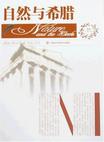自然与希腊
出版时间:2007-05 出版社:湖南科学技术出版社 作者:(奥)E·薜定谔 页数:197 译者:李泳 评注
Tag标签:无
内容概要
诺贝尔桂冠物学家薛定谔是20世纪最著名的科学家之一,他关于科学史和科学哲学的演讲久负盛名。 本书是多年来第一次呈现薛定谔的两个最有名的系列演讲文本。 《自然与希腊》从现代科学追溯到古老的西方哲学思想,为20世纪科学图景打开了历史的画卷。 《科学与人文》提出了20世纪的若干最基本问题:科学研究的价值何在?现代科学成就如何影响物质与精神的关系? 彭罗斯的前言将薛定谔的演讲置于当代科学的背景下,证明它们在今天和在第一次出版时有着同样的意义。
作者简介
薛定谔(Erwin Schrodinger,1887-1961)因为发现量子力学的波动理论获1933年诺贝尔物理学奖,是20世纪最伟大的科学家之一,他的影响远远超出了物理学。他的《生命是什么》是现代分子生物学的先声。他的系列科学史和科学哲学演讲《自然与希腊》和《科学与人文》以科学家的独特眼光立足现代科学,追溯古代西方哲学思想,几十年来散发着长久的智慧芬芳。
书籍目录
Foreword by Roger Penrose 引言NATURE AND THE GREEKS 自然与希腊 Ⅰ The motives for returning to ancient thought Ⅱ The competition, reason v. senses Ⅲ The Pythagoreans Ⅳ The Ionian Enlightenment Ⅴ The religion of Xenophanes.Heraclitus of Ephesus Ⅵ The Atomists Ⅶ What are the special features? BibliographySCIENCE AND HUMANISM 科学与人文 Preface The spiritual bearing of science on life on life The practical achievements of science tending to obliterate its true import true import A radical change in our ideas of matter Form, not substance, the fundamental concept The nature of our'models' Continuous description and causality The intricacy of the continuum The makeshift of wave mechanics The alleged break-down of the barrier between subject and object Atoms or quanta-the counter-spell of old standing, to escape the intricacy of the continuum Would physical indeterminacy give free will a chance? The bar to prediction, according to Niels Bohr Literature后记:哲学是科学的后花园
章节摘录
A RADICAL CHANGE IN OUR IDEASOF MATTERe shall now,at last,come down to some specialtopics.What I have said hitherto may seem prettylong,if you consider it a mere introduction.But I hope it is of some interest in itself- and I could not avoid it.I had to make clear the situation.None of the new discoveries about which I may tell you is frightfully exciting in itself.What is exciting,novel,revolutionary,is the general attitude we are compelled to adopt on any attempt to synthesize them all.Let us go in medias res.There is the problem of matter.What is matter?How are we to picture matter in our mind? The first form of the question is ludicrous.(How should we say what matter is-or,if it comes to that,what electricity is-both being phenomena given to us once only?)The secondform already betrays the whole change of attitude: matter is an image in our nund-mund is thus prior to matter(notwith-standing the strange empirical dependence of my mental pro-cesses on the physical data of a certain portion of matter,viz.my brain). During the second half of the nineteenth century matterseemed to be the permanent thing to wluch we could cling.There was a piece of matter that had never been created (asfar as the physicist knew)and could never be destroyed!Youcould hold on to it and feel that it would not dwindle away under your fingers.Moreover this matter,the physicist asserted,was with re-gard to its demeanour,its motion,subject to rigid laws - everybit of it was.It moved according to the forces which neigh-bouring parts of matter,according to their relative situations,exerted on it.You could foretell, the behaviour,it was rigidlydetermined in all the future by the initial conditions. This was all quite pleasing,anyhow in physical science,in sofar as external inanimate matter comes into play.When ap-plied to the matter that constitutes our own body or the bod-ies of our friends,or even that of our cat or our dog,a well-known difficulty arises with regard to the apparent freedom ofliving beings to move their limbs at their own will.We shaUenter on this question later(see p.58 ff.)At the moment Iwish to try and explain the radical change in our ideas aboutmatter that has taken place in the course of the last half-century.It came about gradually,inadvertently,without anybodyaiming at such a change.We believed we moved still withinthe old 'materialistic'frame of ideas,when it tumed out thatwe had left it. Our conceptions of matter have tumed out to be'much lessmaterialistic'than they were in the second half of the nine-teenth century.They are still very imperfect,very hazy,theylack cleamess in various respects, but this can be said,thatmatter has ceased to be the simple palpable coarse thing inspace that you can follow as it moves along,every bit of it,and ascertain the precise laws goveming its motion. Matter is constituted of particles,separated by comparative-ly large distances; it is embedded in empty space.This notiongoes back to Leucippus and Democritus,who lived in Abderain the fifth century B.C.This conception of particles and emp-ty spaceis retained today(with a modifica-tion that is just the thing I wish to explain now)and not only that,there is complete historical continuity; that is to say,whenever the idea was taken up again it was in full awarenessof the fact that one was taking up the concepts of the ancientphilosophers.Moreover it experienced the greatest thinkabletriumphs in actual experiment,such as the ancient philoso-phers would hardly have hoped for in their boldest dreams.For instance,0.Stem succeeded in determining the distribu-tion of velocities among the atoms in a jet of silver vapour bythe simplest and most natural means,of which figure 1 gives arough schematical sketch.The outer circle(carrying the lettersA,B,C)represents the crosssection of a closed cylindricalbox,exhausted to perfect vacuum.The point S marks thecross-section of an incandescent silver wire,which extends a-long the a:as of the cylinder and continually evaporates silveratoms,that fiy along straight lines,roughly speaking,in radialdirections.However,the cylindrical shield Sh(smaller c:ircle),disposed concentrically around S,lets them pass only at theopening O,which represents a narrow slit parallel to the wireS.Without anything more,they pass on straight to A,wherethey are caught and,after a time,form a precipitate in theform of a narrow black line(parallel to the wire S and the slitO).But in Stern's experiment the whole alyparatus is rotated,as on a potter's wheel,with high speed around the axis S(thesense of the rotation shown by the arrow). ……
图书封面
图书标签Tags
无
评论、评分、阅读与下载
用户评论 (总计12条)
- 不读不了解薛定谔
- 如果你真的想了解薛定谔博大精深的学识,那么阅读此书是最佳的方法。
老薛文笔流畅,读罢令人回味无穷! - 英文版的,读得很有味,编排不错
- 我知道这是本好书,不过得闲下来慢慢看
- 书的质量很好!不过,这本书是英文,只有一点中文件注释。
- 看着费力,会更好一些。
- 书内容不错,量子力学创始人之一薛定萼写的.不过这本书是英文的,不是网上给出的"(奥)薛定谔著,李泳译",但有中文评注,不懂英语的慎买.
- 我要翻译的,看原文太费劲,而且还有SB 在旁边瞎说
- 坑爹啊,居然是英文版的,那请问为什么还有“李泳 译 ”的字样?
- 这本书是英文,只有一点中文件注释。网中都没标注,买回来看不懂
- 该书分为两个部分,包含了编者对该书的注释,有利于进行理解。
- 内容上只要是喜欢的人自然没得说,书的质量很好!
